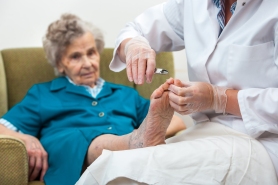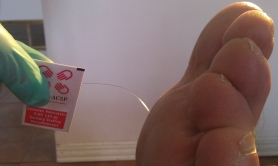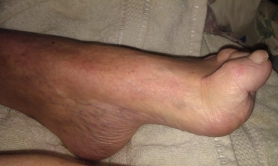“We didn’t realize mom’s feet were in such bad shape. She was hiding them from us.”
“Dad won’t let anyone see his feet. We only saw how bad they were when he was in the hospital.”
Comments such as these are sometimes heard at McDermott Footcare. Family members are alarmed at the condition of their parent’s or other loved one’s feet and call for help.
It may have been many months and perhaps years since their parent has received foot care. As the health and appearance of the feet deteriorate, the person is more likely to hide them from their family and from other people because of shame and embarrassment. The person may also be uncomfortable about having someone touch their feet. When the family members contact McDermott Footcare, they are frustrated and feel guilty.
How do we handle this situation which is increasingly common?
- Family members should not blame themselves. They have not been made aware of the problem.
- Do not force nursing foot care on the person. Someone who is competent and capable of making their own decisions can decide whether or not they want the care.
- Even if the family requests the service, the nurse will not provide foot care without the patient’s consent. The nurse will always respect the wishes of the patient.
- The family can explain to their parent that nursing foot care is beneficial for their comfort, overall health and ease of walking. This conversation may need to be repeated several times.
- If the parent is in a nursing home or retirement residence, ask the nursing staff to talk to them about the importance of regular foot care.
- Request the help of the parent’s doctor to reinforce the need for foot care.
- Reassure the parent that the nurse understands their reluctance and is properly trained to address all foot care concerns.
- Above all, be gentle and patient when discussing the need for nursing foot care. Keep in mind that the parent may be fearful, embarrassed, uncomfortable or worried about the cost. Acknowledging their feelings and giving them time to understand your concerns will help to resolve their reluctance.
Copyright Terry McDermott, RN. May not be reproduced in whole or in part without permission of author



You must be logged in to post a comment.